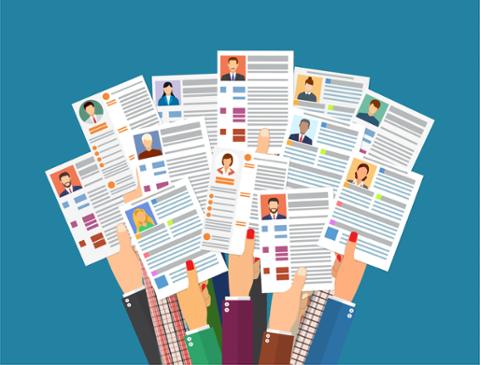
We all know that diversity and inclusion (D&I) is important, whether we frame it as a moral, ethical, competitive, or bottom-line issue. We want to build inclusive workplaces, but it’s hard to know where to start. No matter your organization’s size, you can get the ball rolling by first understanding how inclusive your culture is right now. This is a topic of focus in Dice’s 2018 Diversity and Inclusion Report. Obviously, large, well-heeled companies have more resources to structure their programs, but that shouldn’t be an excuse for the rest of us. In fact, some smaller companies have seen great success. Let’s discuss the D&I tactics used for organizations on both ends of the spectrum.
 The Society of Women Engineers created "Knowledge Cards,” which feature provocative questions, stories and data points around D&I topics. This can prove helpful for smaller shops that don’t know how to initiate the conversation around inclusion. You could also try a “Round Robin” technique in meetings, similar to the “Socratic Method” in college. Essentially, everyone in the meeting must contribute to the discussion, and employees can choose to either participate/add or pass. This method allows everyone to have a voice, as opposed to letting the loud majority dominate group discussions. Consider hosting some “fun” activities during work hours, since working parents might not be able to attend a happy hour. If that’s where the real employee bonding happens, you’re not as inclusive as you think.
The Society of Women Engineers created "Knowledge Cards,” which feature provocative questions, stories and data points around D&I topics. This can prove helpful for smaller shops that don’t know how to initiate the conversation around inclusion. You could also try a “Round Robin” technique in meetings, similar to the “Socratic Method” in college. Essentially, everyone in the meeting must contribute to the discussion, and employees can choose to either participate/add or pass. This method allows everyone to have a voice, as opposed to letting the loud majority dominate group discussions. Consider hosting some “fun” activities during work hours, since working parents might not be able to attend a happy hour. If that’s where the real employee bonding happens, you’re not as inclusive as you think.
Improving the Dialogue
For smaller companies, D&I strategies are less reliant on big programs and facilitators – rather, they’re about taking small, cost-effective steps to show employees that company leadership cares and values inclusion. In that same vein, inclusion should be an active part of the onboarding process. Discuss what it means and how it looks for your organization and your talent acquisition teams. Be up-front and powerful about inclusion, making sure every new employee knows why it matters and what it looks like. As Jennifer Kim, Lever’s former Head of Employee Experience & Development notes here:Start a “guys jar.” Take a page from the Bay Area startup npm’s book, implement a “Guys jar” for a friendly reminder against unnecessarily gendered language in the office. Whenever someone at npm accidentally genders something gender-neutral, they put a dollar in the jar. When they reach $50, they donate the money to a charity.Lever also has a Slack channel called “inclusion” where employees share D&I articles and news. By making the conversations about D&I more present – and having a norm for actively discussing it in the workplace – employees naturally get more involved. Here's a screencap:
 The Society of Women Engineers created "Knowledge Cards,” which feature provocative questions, stories and data points around D&I topics. This can prove helpful for smaller shops that don’t know how to initiate the conversation around inclusion. You could also try a “Round Robin” technique in meetings, similar to the “Socratic Method” in college. Essentially, everyone in the meeting must contribute to the discussion, and employees can choose to either participate/add or pass. This method allows everyone to have a voice, as opposed to letting the loud majority dominate group discussions. Consider hosting some “fun” activities during work hours, since working parents might not be able to attend a happy hour. If that’s where the real employee bonding happens, you’re not as inclusive as you think.
The Society of Women Engineers created "Knowledge Cards,” which feature provocative questions, stories and data points around D&I topics. This can prove helpful for smaller shops that don’t know how to initiate the conversation around inclusion. You could also try a “Round Robin” technique in meetings, similar to the “Socratic Method” in college. Essentially, everyone in the meeting must contribute to the discussion, and employees can choose to either participate/add or pass. This method allows everyone to have a voice, as opposed to letting the loud majority dominate group discussions. Consider hosting some “fun” activities during work hours, since working parents might not be able to attend a happy hour. If that’s where the real employee bonding happens, you’re not as inclusive as you think.


